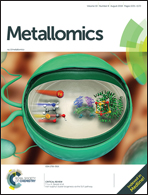Selenium-enriched yeast inhibited β-amyloid production and modulated autophagy in a triple transgenic mouse model of Alzheimer's disease
Abstract
As the most common cause of progressive intellectual failure in elderly humans, Alzheimer's disease (AD) is pathologically featured by amyloid plaques, synaptic loss, and neurofibrillary tangles. The amyloid plaques are mainly aggregates of amyloid β-peptide (Aβ), a primary factor contributing to the pathogenesis of AD. Elimination or reduction of the level of Aβ is considered an important strategy in AD treatment. The pharmacotherapeutic efficacy of selenium (Se), an essential biological trace element for mammalian species, has been confirmed in a number of experimental models of neurodegenerative diseases. Selenium-enriched yeast (Se-yeast) is commonly used as a nutritional supplement for Se. In this study, we investigated the effects and underlying mechanisms of Se-yeast on Aβ pathology in a 4-month-old triple transgenic mouse model of AD (3×Tg-AD mice). The administration of Se-yeast attenuated the deposition of Aβ in the brains of AD mice, which was concomitant with decreased levels of LC3II. The Se-yeast treatment decreased the level of amyloid-protein precursor (APP), downregulated the activity of AMP-activated protein kinase (AMPK) and upregulated the activity of AKT/mTOR/p70S6K. Furthermore, the levels of p62 also significantly decreased, and the cathepsin D levels increased, accompanied by increased turnover of Aβ and APP in Se-yeast-treated AD mice. In addition to decreasing the generation of Aβ, Se-yeast also inhibited the initiation of autophagy by modulating the AMPK/AKT/mTOR/p70S6K signaling pathway and enhanced autophagic clearance, thus reducing the burden of Aβ accumulation in the brains of AD mice. Our results further highlight the potential therapeutic effects of Se-yeast on AD.



 Please wait while we load your content...
Please wait while we load your content...